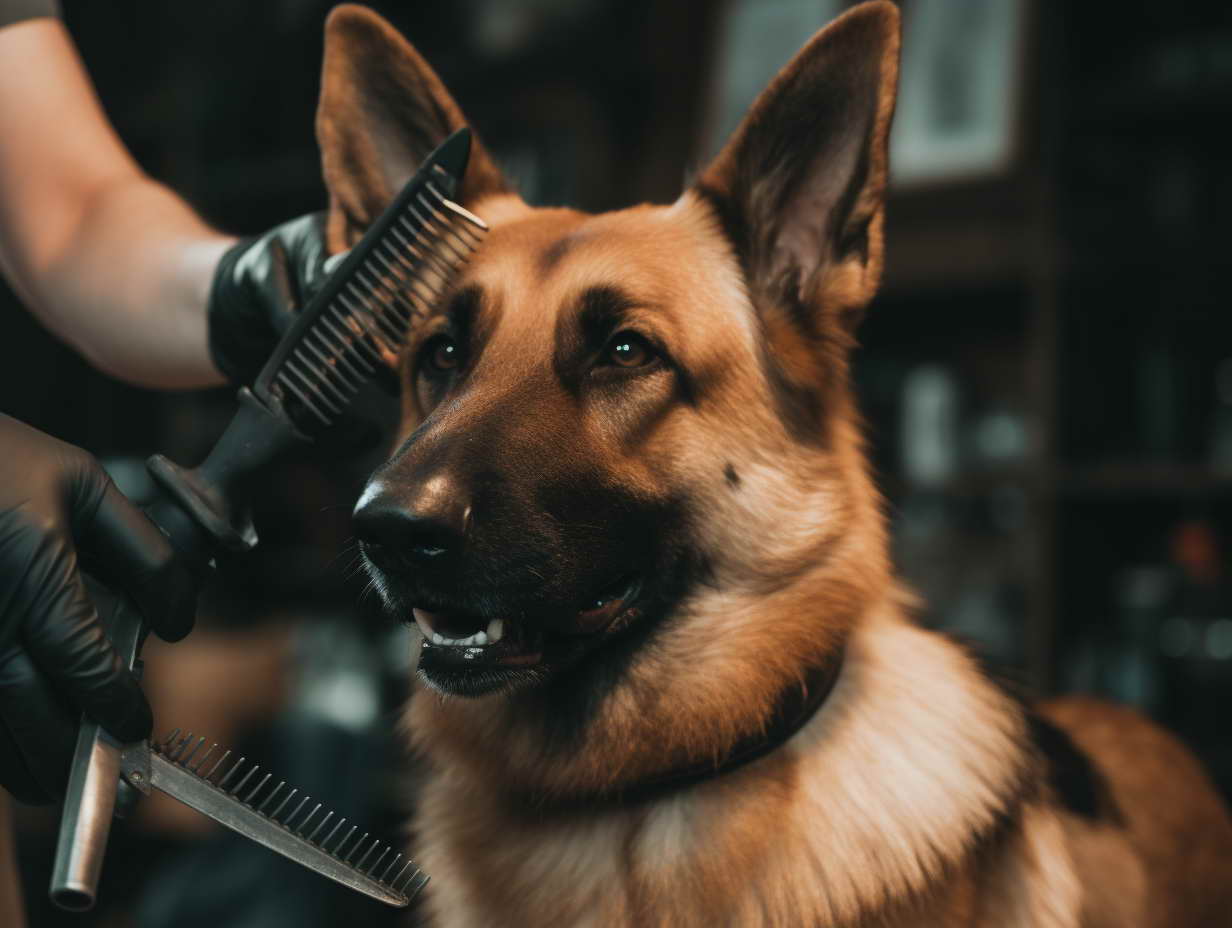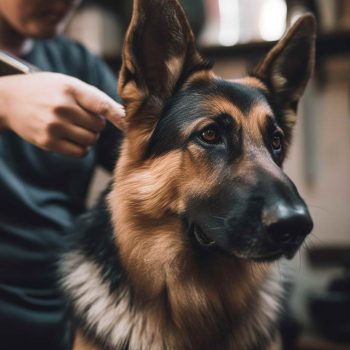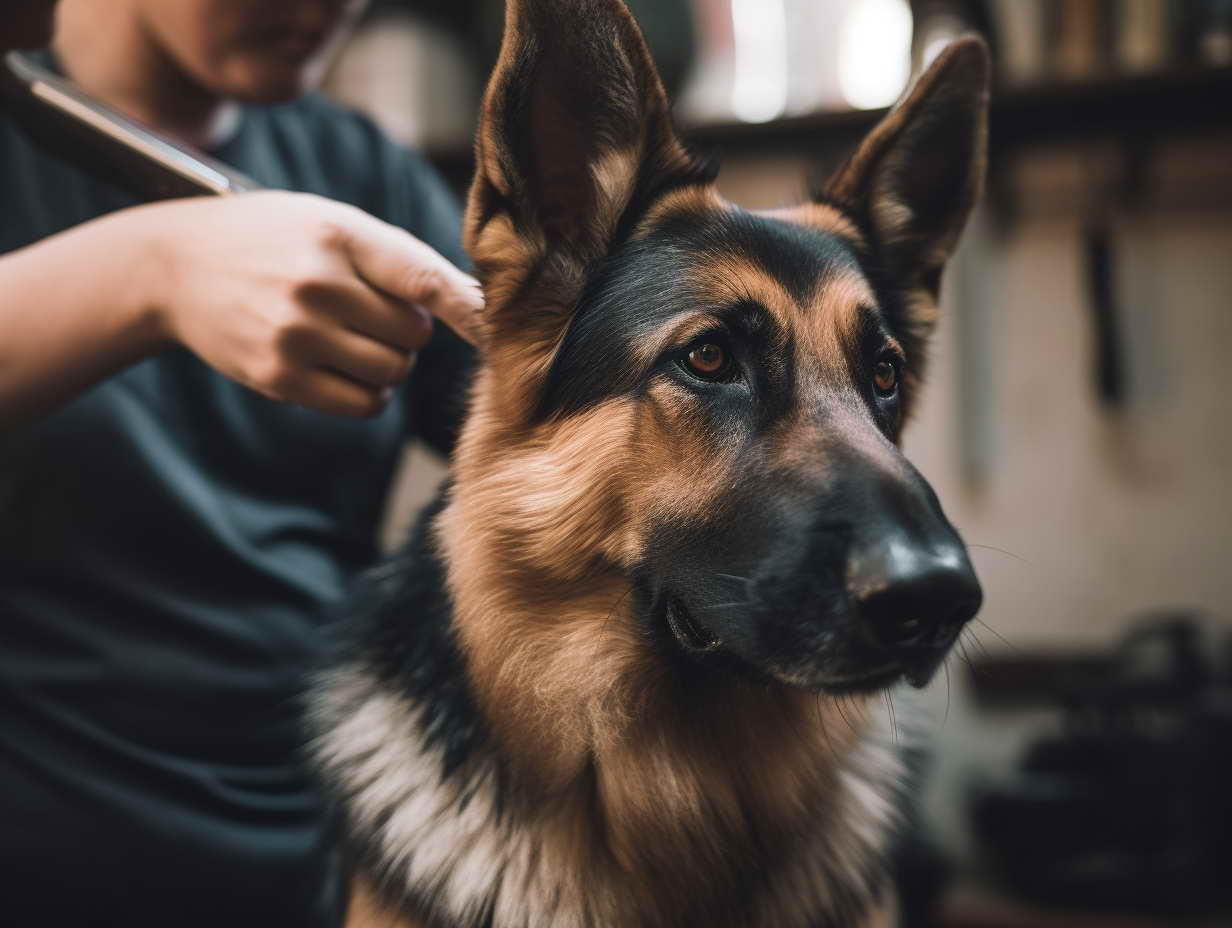Mobile Dog Grooming For Aggressive Dogs: Tips and Techniques
Grooming is an essential aspect of dog care, contributing to their overall health and well-being. For pet owners with aggressive dogs, grooming can be a challenging and stressful experience. In this article, we will delve into the world of mobile dog grooming for aggressive dogs, offering expert tips, techniques, and advice to make the process smoother for both you and your furry companion.
Mobile Dog Grooming For Aggressive Dogs: Understanding the Challenges
Aggressive dogs can exhibit challenging behavior during grooming sessions, making the process difficult for both the dog and the groomer. These challenges include biting, growling, excessive barking, and resistance to handling. It is crucial to address these issues with patience, understanding, and the right approach.
Preparing for Grooming: Creating a Calm Environment
Creating a calm and soothing environment is vital when grooming aggressive dogs. Here are some techniques to help set the stage for a successful grooming session:
- Selecting the Right Location: Choose a quiet and familiar space where your dog feels comfortable. Avoid grooming in busy or noisy areas.
- Positive Reinforcement: Reward your dog with treats or praise during grooming to create positive associations with the process.
- Familiarization: Introduce grooming tools gradually and allow your dog to sniff and investigate them beforehand.
- Comfortable Restraint: Use gentle and humane restraint techniques, such as soft restraints or body wraps, to ensure the safety of both the dog and the groomer.
- Familiar Scents: Utilize familiar scents, such as lavender or chamomile, to promote relaxation during grooming.
Essential Grooming Tools for Aggressive Dogs
Having the right grooming tools can make a significant difference in handling aggressive dogs. Here are some essential tools to have on hand:
- Grooming Gloves: These gloves help protect your hands while providing gentle massages to your dog, reducing anxiety.
- De-shedding Brush: Ideal for removing loose fur, reducing shedding, and preventing matting.
- Nail Clippers: Keeping your dog’s nails trimmed is essential to prevent discomfort and injury.
- Detangler Spray: For dogs with long or curly hair, a detangler spray helps ease out knots and tangles.
- Toothbrush and Toothpaste: Dental hygiene is crucial, even for aggressive dogs, to maintain overall health.
Grooming Techniques for Aggressive Dogs
Understanding the right grooming techniques can greatly improve the experience for both you and your dog. Here are some effective techniques to implement:
- Slow and Steady Approach: Begin grooming sessions gradually, allowing your dog to acclimate to the process.
- Short Sessions: Initially, keep grooming sessions short to prevent overwhelming your dog.
- Positive Reinforcement: Praise and reward your dog for calm behavior during grooming.
- Distraction Techniques: Use toys or treats as distractions during sensitive grooming tasks.
- Professional Assistance: If your dog’s aggression is severe, seek the help of a professional groomer experienced in handling aggressive dogs.
Grooming Specific Breeds of Aggressive Dogs
Grooming aggressive dogs requires an understanding of their specific breed traits and temperaments. Different dog breeds have unique grooming needs, coat types, and sensitivities. Let’s delve into some popular aggressive dog breeds and explore the grooming tips tailored to their characteristics.
Bulldogs
Bulldogs are known for their wrinkled faces and stocky builds. While their short coats make grooming less time-consuming, they do require regular maintenance, especially around their facial folds. These folds are prone to collecting dirt and moisture, making them susceptible to skin issues. To keep your Bulldog clean and comfortable:
- Gently Cleanse the Facial Folds: Use a soft, damp cloth to clean the wrinkles gently. Be sure to dry the area thoroughly to prevent irritation.
- Regular Brushing: Although Bulldogs have short coats, regular brushing helps remove loose hair and distributes natural oils, promoting a healthy and shiny coat.
- Ear Cleaning: Bulldogs’ ears are prone to infection due to their shape. Regularly clean their ears with a veterinarian-approved solution to prevent any problems.
- Nail Trimming: Trim your Bulldog’s nails regularly to avoid overgrowth, which can cause discomfort and affect their gait.
Chihuahuas
Chihuahuas are small dogs with long, luxurious coats that require regular grooming to keep them looking their best. Their hair can become easily tangled and matted, so it’s essential to implement proper grooming techniques:
- Regular Brushing: Use a soft brush to groom your Chihuahua coat at least a few times a week. This helps prevent tangles and reduces shedding.
- Special Attention to Long Hair: For Chihuahuas with long hair, focus on areas that are more prone to tangling, such as behind the ears and around the tail.
- Bathing Frequency: Bathe your Chihuahua as needed, typically every three to four weeks, to maintain cleanliness and a healthy coat.
- Nail Care: Pay attention to your nails and trim them regularly to prevent overgrowth, which can lead to discomfort and potential injury.
German Shepherds
German Shepherds are intelligent and loyal dogs with dense double coats. Their thick fur requires regular grooming to manage to shed and maintain overall coat health:
- De-Shedding Brush: Use a de-shedding brush to remove loose fur and minimize shedding. Regular brushing helps control the amount of hair in your home.
- Slicker Brush: Utilize a slicker brush to untangle any knots or mats in their fur. Start from the bottom and work your way up to avoid causing discomfort.
- Bathing Frequency: German Shepherds usually require baths every two to three months or as needed. Use a high-quality dog shampoo and ensure thorough rinsing.
- Ear and Dental Care: Regularly clean their ears and brush their teeth to prevent ear infections and dental issues.
Pitbulls
Pitbulls are muscular dogs known for their strength and loyalty. They benefit from regular grooming sessions, which can also serve as bonding experiences with their owners:
- Massage during Grooming: Pitbulls appreciate massages during grooming sessions, as it helps alleviate tension and promotes relaxation.
- De-shedding Brush: Use a de-shedding brush to manage their shedding and keep their coat healthy and shiny.
- Nail Trimming: Trim their nails regularly to prevent discomfort and potential injuries, especially if they are active and outdoors often.
- Positive Reinforcement: Use positive reinforcement techniques and rewards to build trust and make grooming sessions enjoyable for your Pitbull.
By understanding the specific grooming needs of your aggressive dog breed, you can tailor your grooming routine to keep them comfortable and looking their best. Consistent grooming not only enhances your dog’s appearance but also contributes to their overall health and well-being. Remember, grooming is an excellent opportunity to bond with your furry friend, so make each session a positive and enjoyable experience for both of you.

Common Challenges During Mobile Dog Grooming for Aggressive Dogs
While grooming aggressive dogs, you may encounter various challenges. Here are some common issues and how to tackle them:
Dealing with Excessive Barking
Aggressive dogs may bark excessively during grooming, indicating fear or discomfort. Stay calm and use positive reinforcement to reduce anxiety.
Handling Paw Sensitivity
Some dogs are sensitive about their paws. Gradually introduce paw handling and reward your dog for allowing you to touch their paws.
Addressing Ear Sensitivity
Gently clean your dog’s ears with a veterinarian-approved solution to prevent discomfort and ear infections.
Managing Aggression during Nail Trimming
Nail trimming can be particularly challenging. Start with short trimming sessions and use treats to reward your dog for cooperation.
Handling Bath Time
Some dogs may resist bath time. Use a non-slip mat in the bathtub, speak in soothing tones, and offer treats to create a positive association with baths.
Coping with Brushing Resistance
If your dog resists brushing, begin with short brushing sessions and gradually increase the duration as they become more comfortable.
FAQs
Can I groom my aggressive dog at home?
While some pet owners can groom their aggressive dogs at home, it’s essential to consider professional assistance if you encounter severe aggression or feel overwhelmed.
How often should I groom my aggressive dog?
The frequency of grooming depends on your dog’s breed and coat type. Regular brushing is recommended to prevent matting and reduce shedding.
Are there any specific grooming techniques for small aggressive dogs?
Small aggressive dogs may need extra patience and gentleness during grooming. Use smaller grooming tools and be mindful of their size.
My dog hates getting a bath. Any tips to make it easier?
Try introducing your dog to water slowly, use a calming shampoo, and reward them with treats for staying calm during the bath.
How do I handle aggressive behavior during nail trimming?
Start by getting your dog used to having their paws touched. Gradually introduce the nail clippers and reward them for cooperation.
Is it safe to groom an aggressive dog on my own?
Grooming an aggressive dog requires caution and patience. If you are unsure or uncomfortable, seek professional help.
Conclusion
Mobile dog grooming for aggressive dogs can be challenging, but with the right techniques and tools, it becomes a rewarding experience for both you and your furry companion. Remember to be patient, use positive reinforcement, and seek professional assistance when necessary. By understanding your dog’s individual needs and providing a calm environment, you can create a positive grooming experience that strengthens the bond between you and your beloved pet.


Leave a Reply